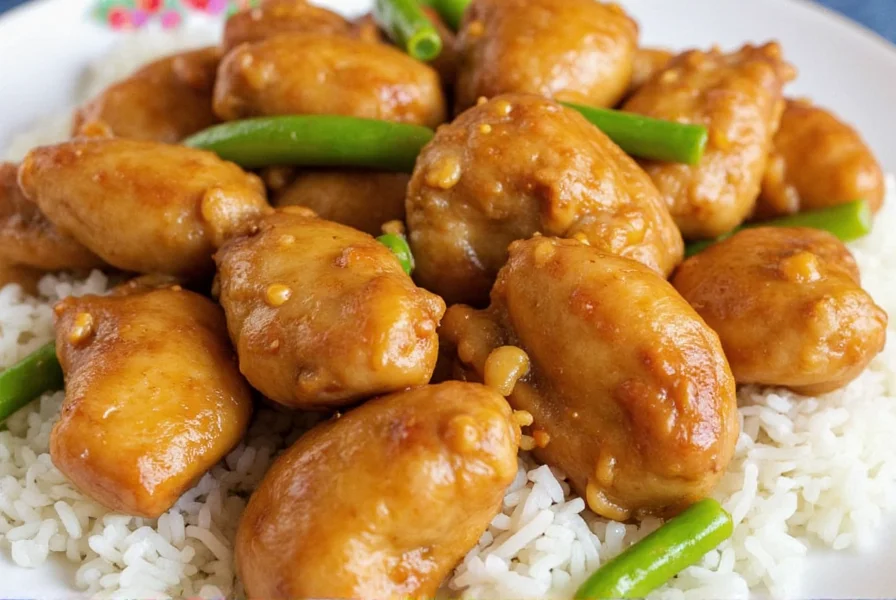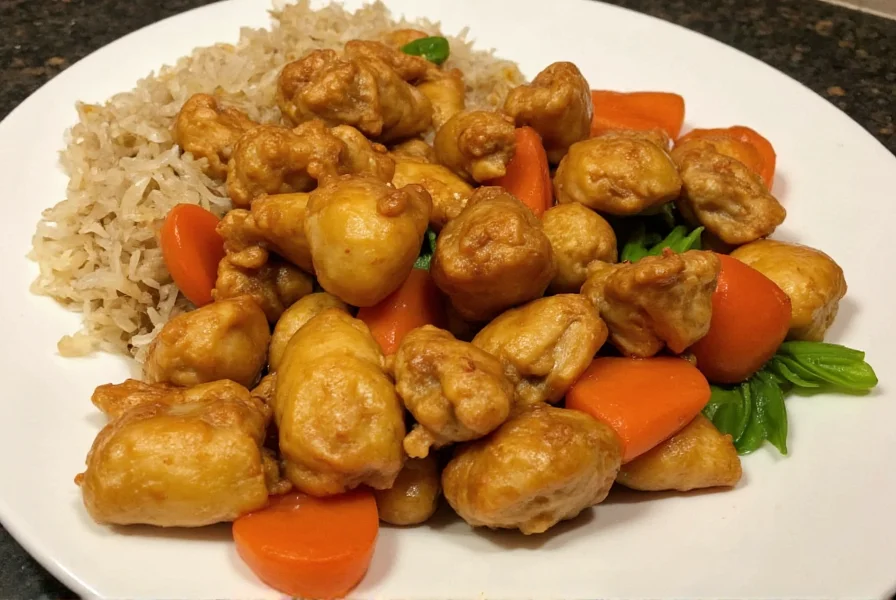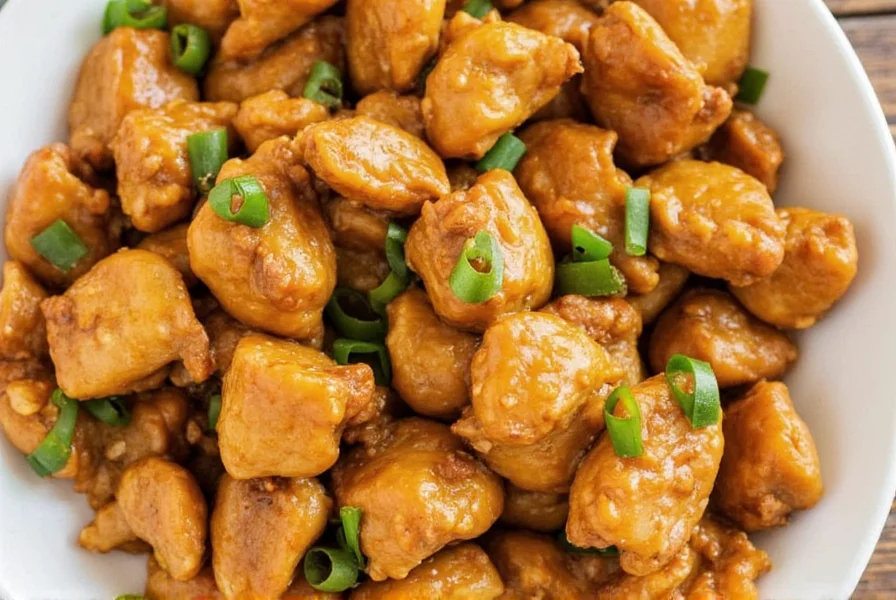The perfect ginger chicken recipe combines tender chicken pieces with fresh ginger, garlic, and a savory-sweet sauce for an authentic Asian-inspired dish ready in 30 minutes. This easy ginger chicken recipe for beginners yields juicy, flavorful results every time with just 10 simple ingredients and clear step-by-step instructions.
Creating restaurant-quality ginger chicken at home is simpler than you might think. This authentic Chinese ginger chicken recipe delivers the perfect balance of fresh ginger's warmth, garlic's pungency, and a glossy sauce that clings to perfectly cooked chicken. Whether you're cooking for weeknight dinners or special occasions, this quick ginger chicken dinner recipe satisfies cravings for takeout without the delivery fee.
Essential Ingredients for Perfect Ginger Chicken
The magic of this dish lies in its simplicity and quality ingredients. For the best ginger chicken stir fry, gather these components:
| Ingredient | Quantity | Preparation Notes |
|---|---|---|
| Chicken thighs (boneless, skinless) | 1.5 lbs | Cut into 1-inch pieces for even cooking |
| Fresh ginger | 3 tablespoons | Finely grated (not minced for better flavor release) |
| Garlic | 4 cloves | Minced |
| Soy sauce | 3 tablespoons | Use reduced-sodium for better control |
| Rice vinegar | 1 tablespoon | Essential for brightening the sauce |
| Brown sugar | 2 tablespoons | Creates the perfect sweet-savory balance |
| Sesame oil | 1 teaspoon | Add at the end for maximum aroma |
| Green onions | 3 | Sliced for garnish |
| Cornstarch | 1 tablespoon | For velveting chicken and thickening sauce |
| Vegetable oil | 2 tablespoons | High smoke point for stir-frying |

Step-by-Step Cooking Instructions
Follow these professional techniques for homemade ginger chicken with fresh ingredients that rivals your favorite takeout:
Preparing the Chicken
- Combine chicken pieces with 1 tablespoon soy sauce, 1 teaspoon cornstarch, and 1 teaspoon sesame oil in a bowl
- Massage the mixture into the chicken for 2 minutes to tenderize
- Cover and refrigerate for 15-30 minutes (don't skip this step for juicier results)
Creating the Sauce
- Whisk together 2 tablespoons soy sauce, 1 tablespoon rice vinegar, 2 tablespoons brown sugar, and 1 tablespoon cornstarch in a small bowl
- Add ¼ cup chicken broth or water and mix until smooth
- Set aside while you cook the chicken
Stir-Frying Process
- Heat 1 tablespoon vegetable oil in a wok or large skillet over high heat until shimmering
- Add marinated chicken in a single layer and cook undisturbed for 2 minutes
- Flip chicken and cook for another 2 minutes until golden (don't overcrowd the pan)
- Remove chicken and set aside
- Add remaining oil to the wok, then immediately add grated ginger and minced garlic
- Stir constantly for 30 seconds until fragrant but not browned
- Pour in the sauce mixture, stirring constantly as it thickens (about 1 minute)
- Return chicken to the wok and toss to coat evenly in the glossy sauce
- Remove from heat and stir in remaining ½ teaspoon sesame oil
- Garnish with sliced green onions before serving
Pro Tips for Restaurant-Quality Results
Achieving perfect ginger chicken every time requires attention to these critical details:
- Ginger preparation matters: Use a microplane to grate fresh ginger rather than mincing it. This releases more gingerol (the compound responsible for ginger's flavor) into the dish.
- Temperature control: Keep your wok extremely hot for proper searing but reduce heat slightly when adding the sauce to prevent burning.
- Don't overcook the chicken: Chicken thighs will continue cooking from residual heat after removal from the wok. Remove them when they're just cooked through.
- Sauce consistency: If your sauce becomes too thick, add splashes of warm water (1 teaspoon at a time) until desired consistency is reached.
Common Mistakes to Avoid
Many home cooks encounter these pitfalls when making ginger chicken:
- Using ground ginger instead of fresh (lacks the bright, complex flavor)
- Adding all ingredients at once rather than building flavors in stages
- Overcrowding the pan, which steams rather than sears the chicken
- Stirring constantly while chicken is searing (prevents proper browning)
- Adding sesame oil at the beginning (its delicate flavor burns at high heat)
Serving Suggestions
This versatile dish pairs beautifully with:
- Steamed jasmine rice or brown rice for a classic combination
- Cauliflower rice for a low-carb alternative
- Stir-fried vegetables like broccoli, snap peas, or bok choy
- A side of egg rolls or spring rolls for a complete meal
Storage and Reheating Instructions
Proper storage maintains the quality of your ginger chicken:
- Refrigerate in an airtight container for up to 3 days
- Freeze for up to 2 months (sauce may separate slightly but will recombine when reheated)
- Reheat gently in a skillet with a splash of water rather than microwaving to preserve texture
- Avoid reheating more than once for best food safety and quality

Popular Variations
Customize this basic recipe to suit your preferences:
- Spicy ginger chicken: Add 1-2 teaspoons of sambal oelek or red pepper flakes
- Honey ginger chicken: Replace brown sugar with honey for a different sweetness profile
- Vegetarian option: Substitute chicken with extra-firm tofu or mushrooms
- Gluten-free version: Use tamari instead of soy sauce
- Citrus twist: Add 1 tablespoon of fresh orange or lime zest to the sauce
Frequently Asked Questions
Can I use chicken breast instead of thighs in this ginger chicken recipe?
Yes, but chicken thighs work better for this recipe as they stay juicier during cooking. If using chicken breast, reduce cooking time by 1-2 minutes per side and consider pounding to even thickness for consistent results. Breast meat can become dry more easily with the high-heat stir-frying method.
How can I make my ginger chicken sauce thicker without adding more cornstarch?
Simmer the sauce for an additional 1-2 minutes to reduce and concentrate it. Alternatively, mash some of the cooked ginger pieces against the side of the wok to release more starch into the sauce. You can also let the finished dish sit for 5 minutes before serving, as the sauce will naturally thicken as it cools slightly.
What's the best way to store fresh ginger for this recipe?
Store unpeeled ginger in the refrigerator's crisper drawer for up to 3 weeks. For longer storage, peel and freeze ginger pieces in an airtight container for up to 6 months. Frozen ginger can be grated directly from frozen without thawing, which actually makes grating easier.
Why does my ginger chicken turn out soggy instead of glossy?
Soggy ginger chicken usually results from overcrowding the pan or adding too much liquid at once. Cook chicken in batches if necessary, and make sure your wok is properly preheated before adding ingredients. The sauce should thicken quickly when added to the hot pan - if it doesn't, your cornstarch mixture may have settled, so whisk it again before adding.











 浙公网安备
33010002000092号
浙公网安备
33010002000092号 浙B2-20120091-4
浙B2-20120091-4